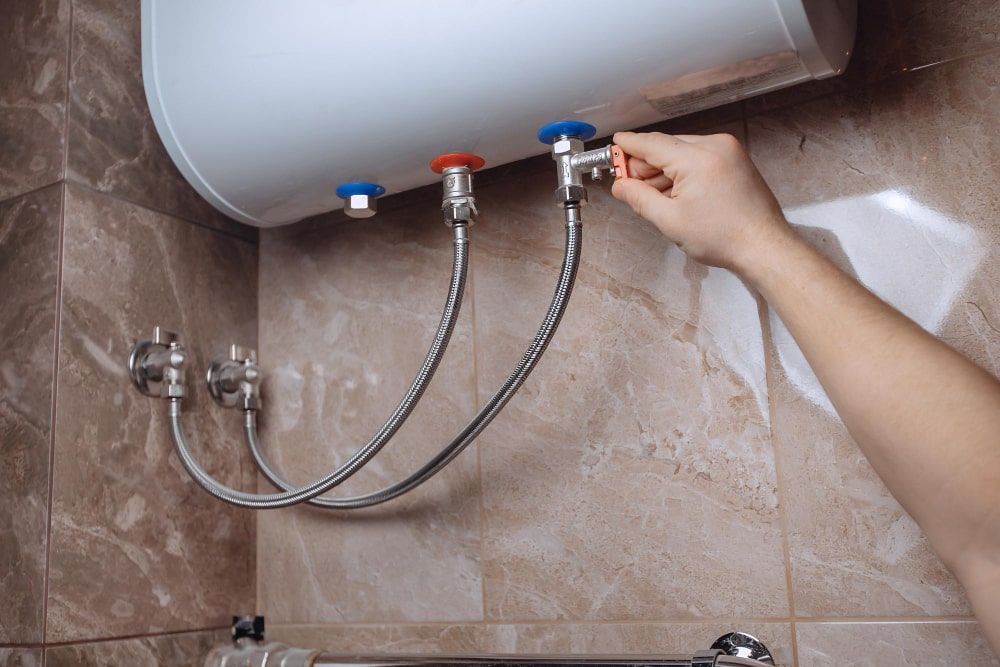Steps on How to Care for Your Home's Hot Water System ProperlyImportant Care Techniques for Your Home's Hot Water System
Steps on How to Care for Your Home's Hot Water System ProperlyImportant Care Techniques for Your Home's Hot Water System
Blog Article
What are your thoughts on How to Maintain a Hot Water Heater in a Few Simple Steps?

Warm water is vital for daily convenience, whether it's for a revitalizing shower or washing meals. To guarantee your warm water system runs effectively and lasts much longer, regular upkeep is key. This short article gives useful pointers and insights on just how to maintain your home's warm water system to avoid disruptions and costly repair services.
Introduction
Maintaining your home's warm water system may appear difficult, yet with a few basic actions, you can ensure it runs efficiently for years to find. This overview covers everything from understanding your warm water system to do it yourself maintenance suggestions and recognizing when to call in professional assistance.
Value of Maintaining Your Hot Water System
Routine maintenance not just expands the life-span of your warm water system but also ensures it operates effectively. Disregarding upkeep can lead to decreased effectiveness, greater power costs, and even premature failing of the system.
Signs Your Warm Water System Needs Maintenance
Knowing when your hot water system needs interest can protect against significant issues. Watch out for indicators such as irregular water temperature, strange sounds from the heater, or rustic water.
Purging the Hot Water Heater
Flushing your water heater gets rid of debris buildup, enhancing effectiveness and extending its life.
Checking and Changing Anode Rods
Anode poles prevent corrosion inside the storage tank. Evaluating and changing them when broken is essential.
Complicated Problems Calling For Specialist Assistance
Instances consist of significant leakages, electrical troubles, or if your hot water heater is consistently underperforming.
Regular Professional Upkeep Benefits
Professional maintenance can include thorough inspections, tune-ups, and making certain compliance with safety and security criteria.
Evaluating and Adjusting Temperature Settings
Adjusting the temperature settings guarantees ideal efficiency and security.
Do It Yourself Tips for Upkeep
You can do numerous maintenance tasks yourself to keep your hot water system in top condition.
Checking for Leaks
Routinely examine pipes and connections for leakages, as these can bring about water damages and greater costs.
Recognizing Your Warm Water System
Prior to diving into upkeep jobs, it's handy to recognize the standard elements of your warm water system. Usually, this includes the water heater itself, pipes, anode poles, and temperature level controls.
Regular Monthly Maintenance Tasks
Regular monthly checks can aid capture small issues prior to they intensify.
Evaluating Pressure Alleviation Valves
Testing the pressure safety valve ensures it works correctly and avoids excessive pressure build-up.
Protecting Pipes
Insulating warm water pipelines lowers warmth loss and can save energy.
When to Call a Specialist
While do it yourself maintenance is advantageous, some concerns call for specialist experience.
Verdict
Routine maintenance of your home's warm water system is vital for efficiency, long life, and expense savings. By complying with these tips and recognizing when to seek professional aid, you can guarantee a dependable supply of hot water without unexpected interruptions.
How to Maintain an Instant Hot Water Heater
Before tinkering with your hot water heater, make sure that it’s not powered on. You also have to turn off the main circuit breaker and shut off the main gas line to prevent accidents. Also turn off the water valves connected to your unit to prevent water from flowing into and out of the appliance. 2. When you’re done, you have to detach the purge valves’ caps. These look like the letter “T” and are situated on either side of the water valves. Doing so will release any pressure that has accumulated inside the valves while at the same time avoid hot water from shooting out and burning your skin. 3. When the purge valves’ caps are removed, you have to connect your hosing lines to the valves. Your unit should have come with three hoses but if it didn’t, you can purchase these things from any hardware or home repair shops. You can also get them from retail stores that sell water heating systems. Read the user’s manual and follow it to complete this task properly. When the hosing lines are connected, open the purge port’s valves. 4. You should never use harsh chemical cleaners or solutions when cleaning your unit. Make use of white vinegar instead. It should be undiluted and you’ll probably use about 2 gallons. 5. Now flush your water heater. This task should probably take about 40 minutes. We can’t give you specific directions for this because the procedure is carried out depending on the type, model and brand of your heater. With that being said, refer to the user’s manual. 6. When you’re done draining the unit, you have to turn off the purge port valves again. Remove the hosing lines that you earlier installed on each of the water valves. Put the valve caps (purge port) back in their respective places and be very careful so as not to damage the rubber discs that are found inside these caps. 7. Now that everything’s back in place, check your user’s manual again to find out how to reactivate your water heating system. 8. Once it is working, turn one of your hot water faucets on just to let air pass through the heater’s water supply pipes. Leave the tap on until water flows smoothly out of it. https://www.orrplumbing.com/blog/2014/september/how-to-maintain-an-instant-hot-water-heater/

We had been shown that report about What Kind of Maintenance Do Water Heaters Need? through a good friend on another web address. Loved our write-up? Please quickly share it. Let somebody else find it. I enjoy your readership.
View Report this page